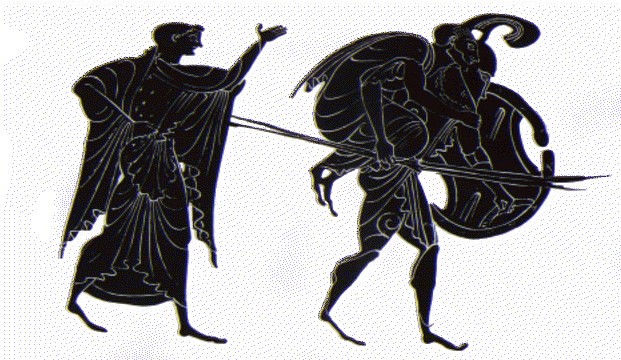Augustine's "Aeneid"
Rival Plot-lines in Virgil's and Augustine's works
One particular theory argues that Augustine intends for his work to be a reworking of the story of Aeneas in effect , a retelling with new themes and motives:
AENEAS |
|
AUGUSTINE |
|
| Carnality in Carthage | Carnality in Carthage |
| Recalls his defeat and escape at Troy | Recalls his study and love of Virgil's Aeneid |
| Leaves Dido to fulfill his destiny | Leaves Monica to pursue his personal goals |
| Discovers his fatum in Italy | Discovers his fatum in Rome and Milan |
| Allies with Etruscans and Latins | Allies with Manicheans and Neo-Platonists |
| Visits his father Anchises in the Underworld | Discovers his spiritual father Ambrose |
| Anchises teaches Aeneas his destiny | Ambrose teaches Augustine the truths of Christian preaching |
| Aeneas pledged to marry Lavania | Augustine puts away his concubine |
| The madness of civil war between Aeneas and the Latins | The conversion of Augustine - an internal civil war |
| Aeneas kills Turnus | Monica dies, leaving Augustine |
| The epic breaks off with a sense of "uneasy watchfulness" | Augustine is left in book 9 to mourn but also rejoice in Christian victory |
| Another Argument for the structure of Augustine's Confessions suggests the following pattern: Augustine ascends from his base life, ever higher and closer to God: | |
|
Primal Origins (Bk 12-13)
Universal Time (Bk 11) Universal Memory, Primal Memory (Bk 10) Christian Awareness of Death and Loss (Bk 9) Christian Awareness of Logos/ Mystical Vision (Bk 9) Conversion, Baptism, Christian Redirection (Bk 8) "Aenediac" Wanderings, Cities, False Ideologies "Aenediac" Privileging of the Sensual, Carnal, Venial "Aenediac" Search for Personal Freedom Infancy's Primal Cries |
Adapted from Form, Robert J. Augustine and the Making of a Christian Literature.
Lewiston: Edwin Mellen P, 1995


